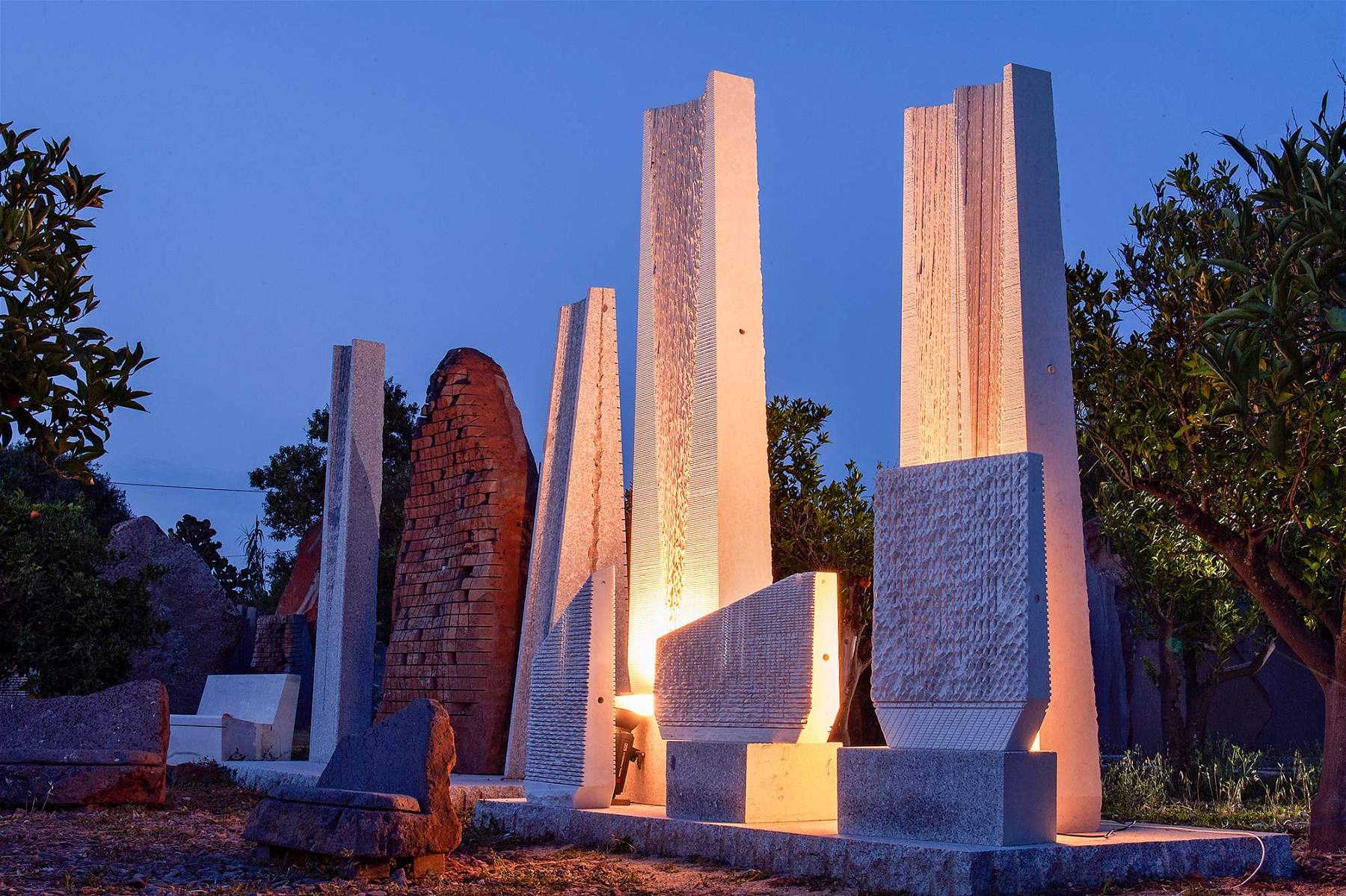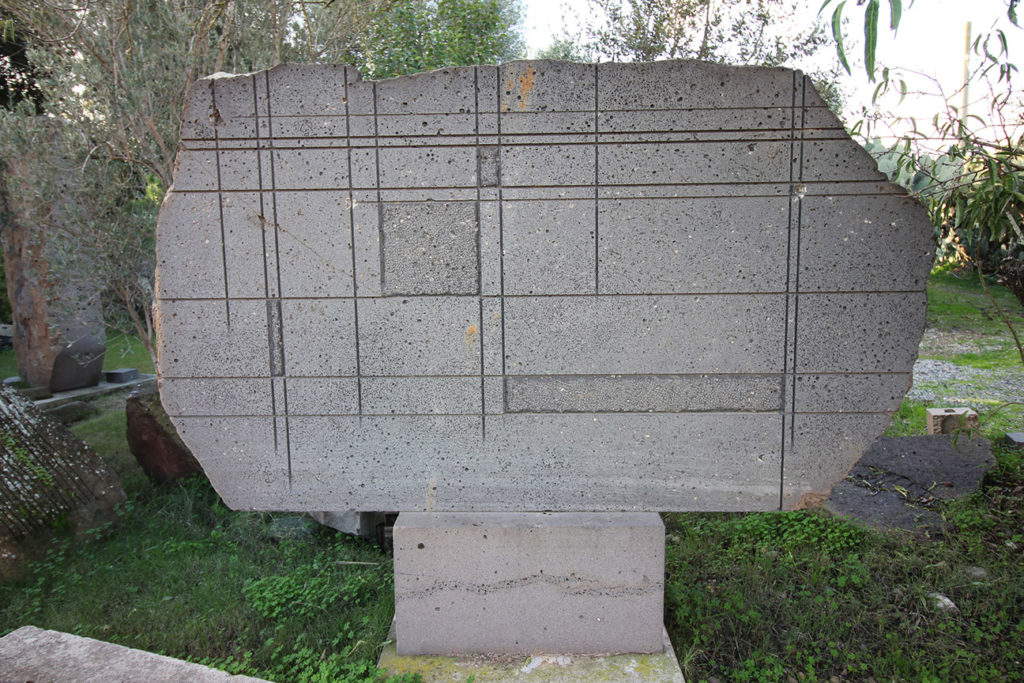“My sculptures for now are here, in the places where I planted them for them to take root and return to life. One day I don’t know, I hope they will return to the Universe that generated them.” That was what Pinuccio Sci ola (Giuseppe Sciola; San Sperate, 1942 - Cagliari, 2016) said about the works he had collected in the Giardino Sonoro in San Sperate, the village in southern Sardinia where he was born: the Giardino, which in the 1960s was the place where Sciola worked and created his works, is now a park that collects several of his sound sculptures. He had begun this particular and unusual quest in 1996, the year to which dates the first public exhibition of his stones capable of producing sounds: in an exhibition held in Berchidda, in the province of Sassari, Sciola had brought a sculpture entitled Jazz Stone (a tribute to the festival that hosted his work: it was a jazz festival), which was capable of producing melodies if played in the right way. On that occasion, a concert was held with the celebrated Sardinian trumpeter Paolo Fresu (a native of Berchidda himself) and Swiss percussionist Pierre Favre. It was an unusual concert where, in addition to classic jazz instruments, stone was also playing.
Since then, Sciola’s sound sculptures have toured all over the world (and continue to do so despite the fact that the artist passed away prematurely in 2016), and still feature in concerts where they act as real musical instruments. Underlying this is the idea that typical elements of sculpture can engage not only the sense of sight, or at most the sense of touch, but can also activate auditory sensations. In order to make his sculptures sound, Sciola carefully selected the material (a local stone), and subjected them to careful processing, subdividing the works into geometric lines that, when observed, look now like chessboards, now like the strings of a harp, now like the keys of a piano. They are sculptures, moreover, deeply rooted in Sardinian culture, since their shape recalls that of the megaliths of the peoples who inhabited the island in prehistoric times.
 |
| Pinuccio Sciola’s Giardino Sonoro in San Sperate |
 |
| The Sound Garden of Pinuccio Sciola in San Sperate |
 |
| Pinuccio Sciola’s Sound Garden in San Sperate |
“The large boulders of trachyte or basalt,” wrote Paolo Fresu in his book Musica dentro, “were sheared into the bowels with large saws that cut them cleanly, modifying their shapes or creating deep grooves similar to thin blades. In addition to their purely artistic function, these stones, when caressed or struck, emitted sounds that had never been heard. The stone was volcanic, thus porous and full of airy constellations that made it resemble a potential musical instrument.” The resulting sound had something celestial about it. Gillo Dorfles was well aware of this: “Pinuccio Sciola’s sound stones,” we read in a testimony reported on the Sound Garden’s website, “have the power to arouse in us the equivalent of a sacred event; or at least of an event where the symbolic factor is embodied in a work that (before being of man) is of creation.”
The stones have evocative names: there is a Homage to Piet Mondrian, where the cuts take on the textures typical of the father of neoplasticism. There are Seeds, works in which Pinuccio Sciola’s thaumaturgic power reaches its highest degrees, to the point of giving stone a soul. There is Elastic Stone, which dematerializes the strength and hardness of stone into an unexpected lightness. A bit like what happens in Sailing, where Sciola’s geometrism takes the form of an elegant boat that we seem to see blown by the wind.
Sciola was an artist of international stature: he studied in Madrid, Paris and Salzburg, trained alongside artists such as Oskar Kokoschka and Emilio Vedova, took classes with Herbert Marcuse, traveled to Mexico to work with Davide Alfaro Siqueiros, participated in the Venice Biennale in 1976, and toured almost every continent with his works. But he has also been a man firmly attached to his Sardinia, and from his travels around the world he has enriched his relationship with his land, renewing his concept of art, a humble art, closely linked to nature, history, and the rural reality of Sardinia. Today, as mentioned, many of his sculptures are gathered in the Giardino Sonoro, Sardinia’s first public art park. “A place of art,” as stated on the Garden’s website, “that expresses itself in all the languages of the world, where basalt and limestone produce evocative archaic, ancestral and mystical sounds; where stone ’seeds’ are sown so that culture fertilizes nature; where granites, in the darkness of night, reveal through grazing light new three-dimensional surfaces. A place surrounded by greenery, charged with energy, involving all the senses, giving visitors the opportunity to enjoy, in an unprecedented dimension, Art and Nature. A living nature, down to its most immobile and silent element: stone.”
 |
| Pinuccio Sciola, Jazz Stone |
 |
| Pinuccio Sciola, Homage to Mondrian |
 |
| Pinuccio Sciola, The Sail |
 |
| Pinuccio Sciola's Giardino Sonoro in Sardinia, the park where sculptures play |
Warning: the translation into English of the original Italian article was created using automatic tools. We undertake to review all articles, but we do not guarantee the total absence of inaccuracies in the translation due to the program. You can find the original by clicking on the ITA button. If you find any mistake,please contact us.